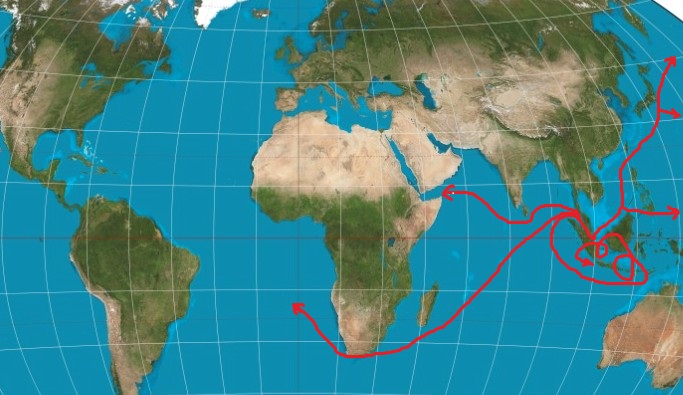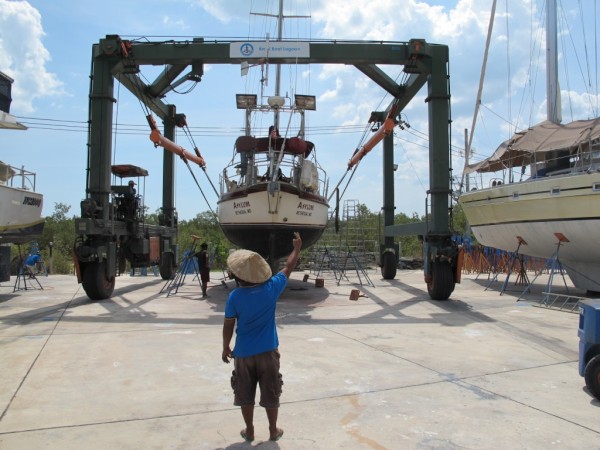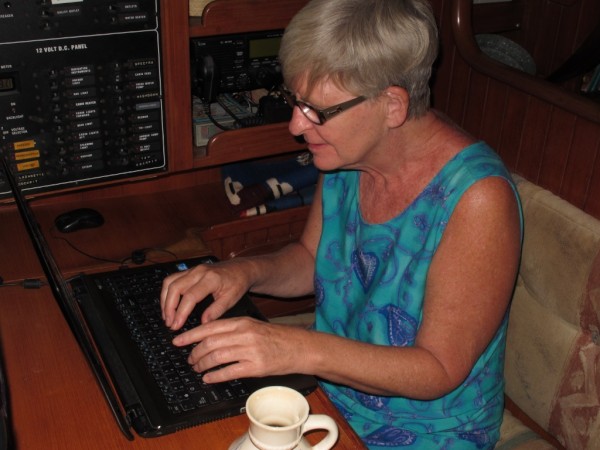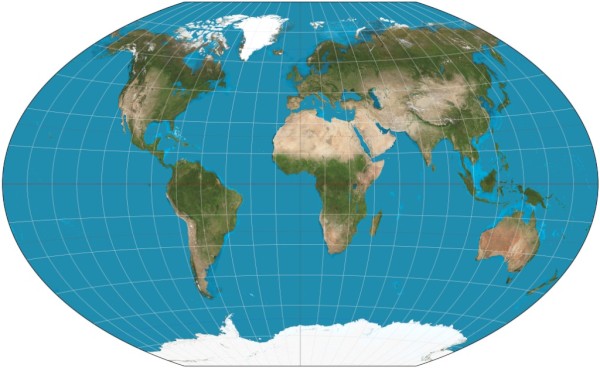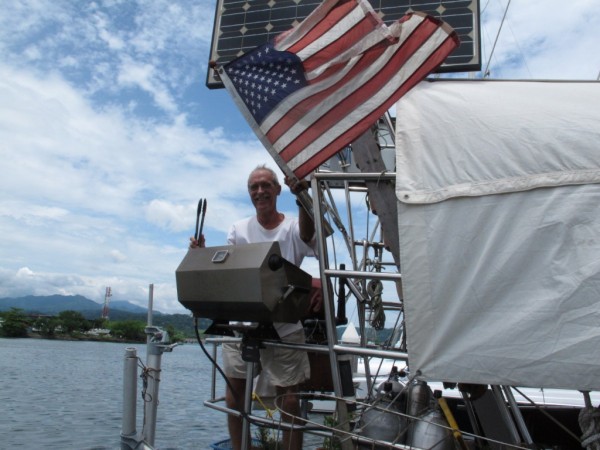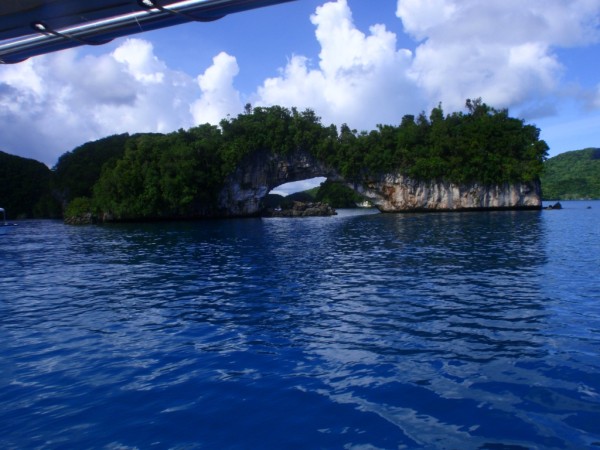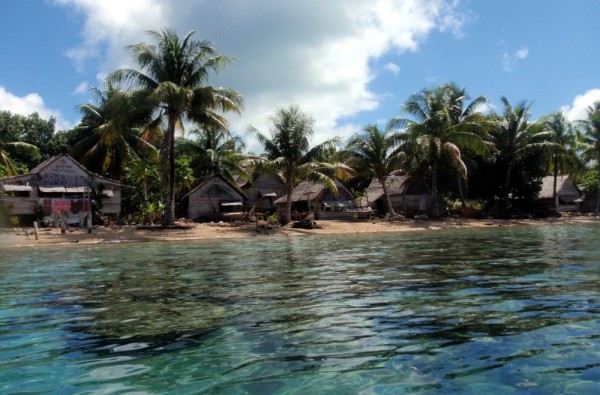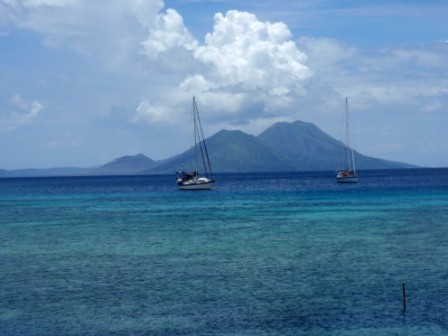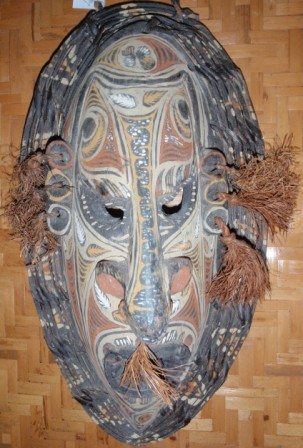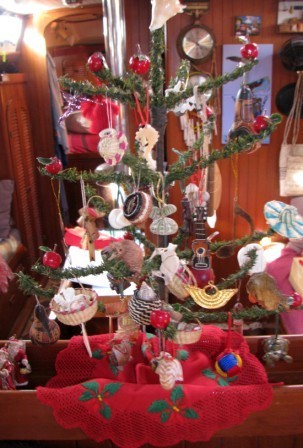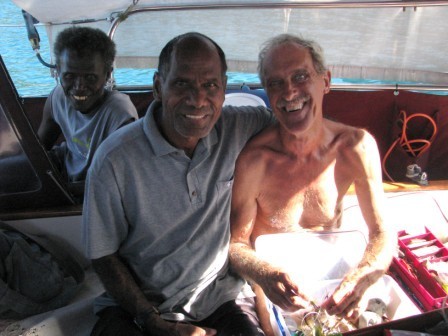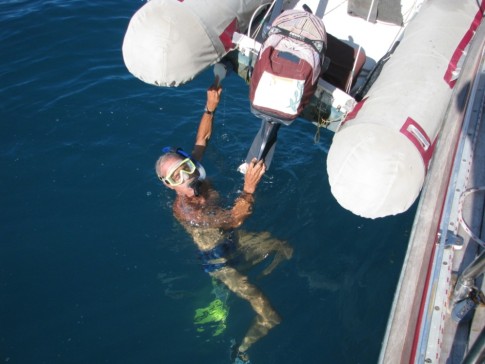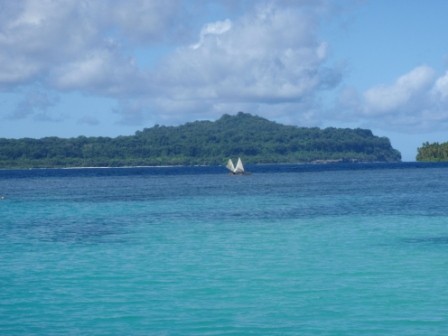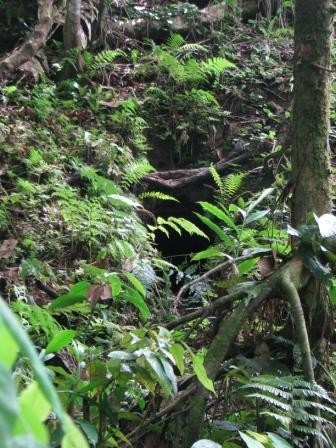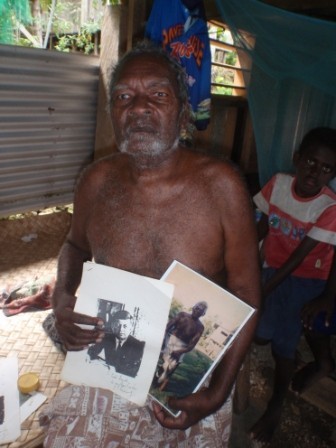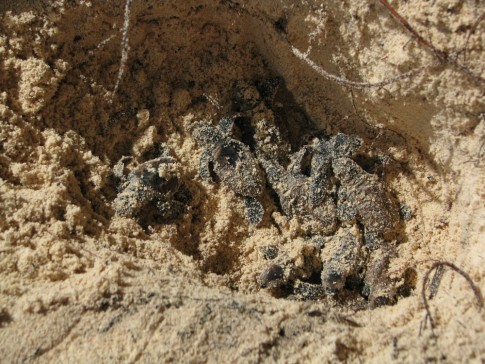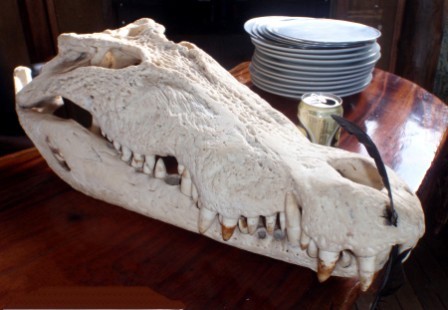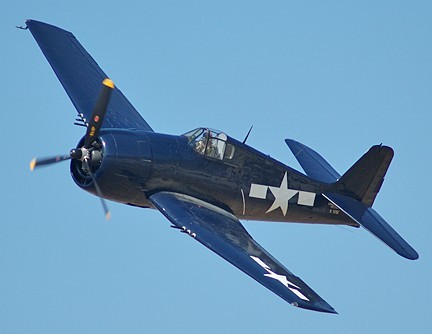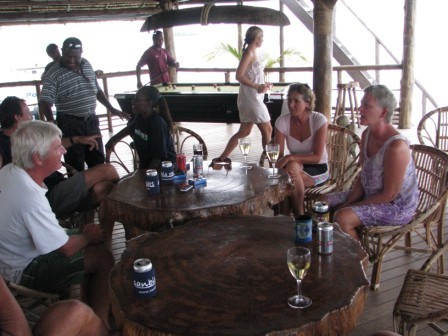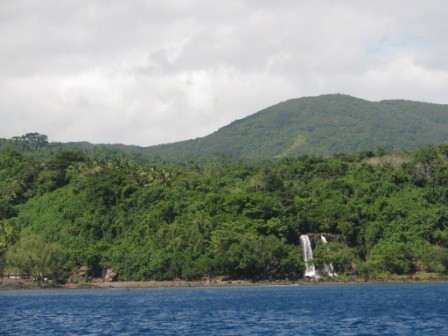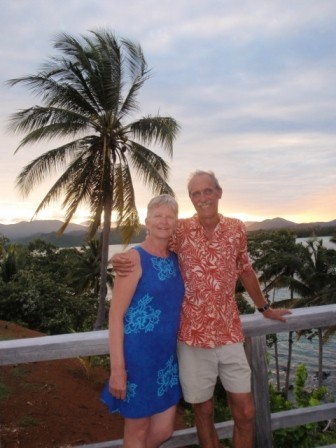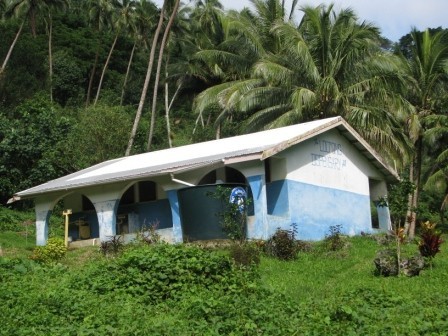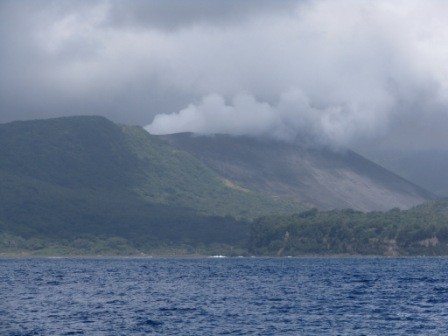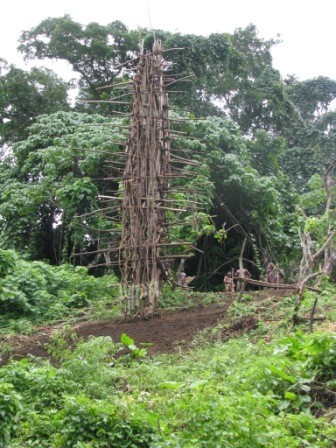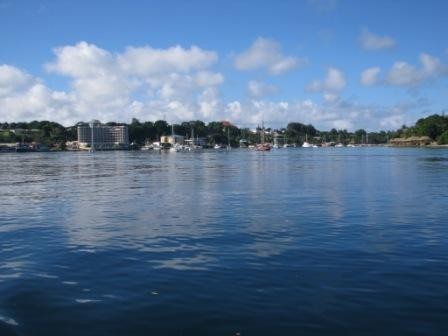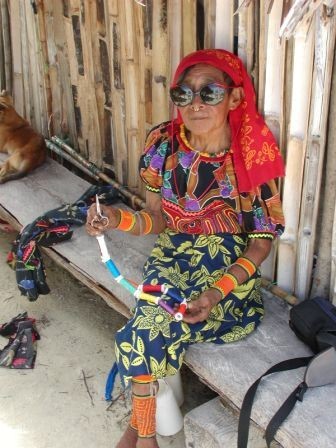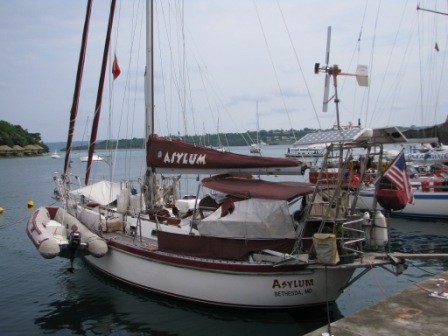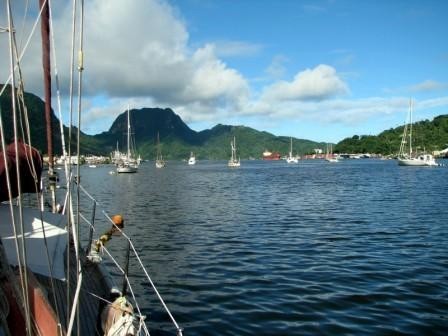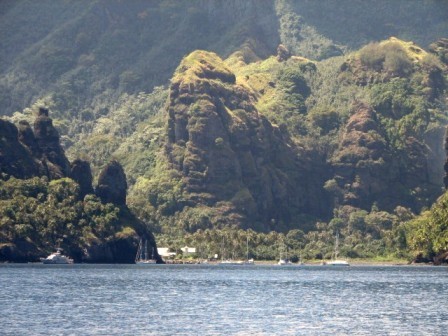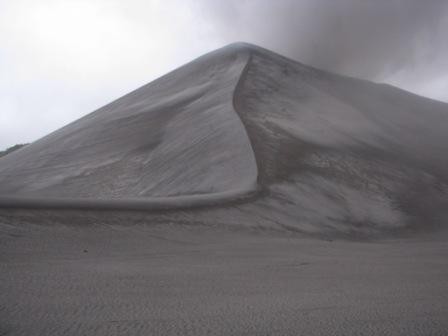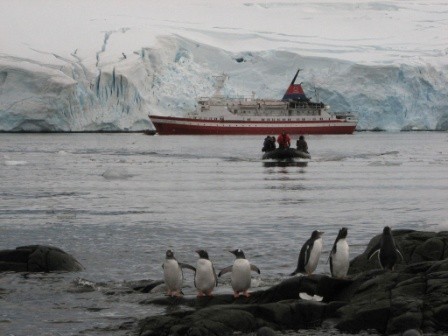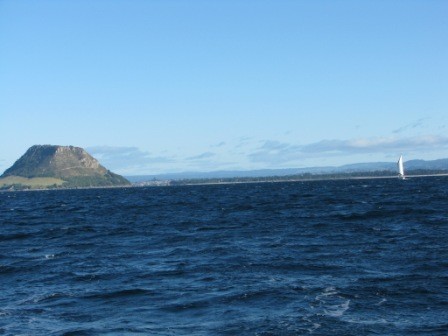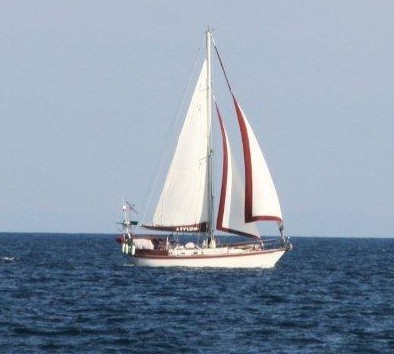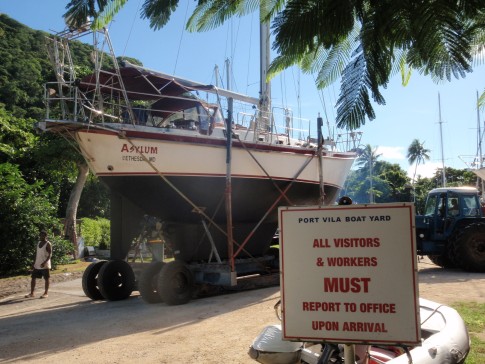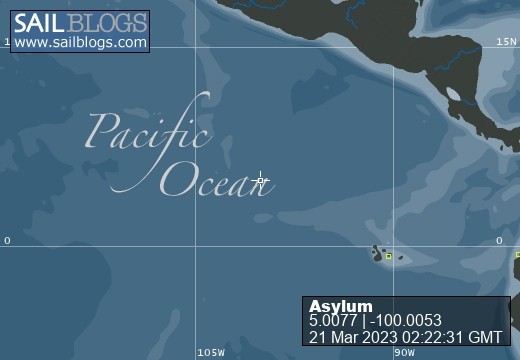
Asylum
22 June 2019 | Straits Quay Marina, Penang, Malaysia
17 July 2016 | Penang, Malaysia
20 February 2016 | Penang, Malaysia
02 October 2015 | Thailand
11 April 2015 | Krabi Boat Lagoon Marina, Thailand
25 December 2014 | Langkawi, Malaysia
04 June 2014 | Philippines
07 January 2014 | Brookeville, MD
04 July 2013 | Subic Bay Yacht Club, Philippines
31 October 2012 | Palau
02 December 2011 | Hermit Islands, Papua New Guinea
08 November 2011 | Maryland, USA
15 May 2011 | Kavieng, New Ireland, PNG
26 April 2011 | Kavieng, New Ireland
26 March 2011 | Kokopo, New Britain, Papua New Guinea
16 March 2011 | Kokopo, New Britain, Papua New Guinea
12 February 2011 | From Peava again
05 February 2011 | Solomon Islands
01 December 2010 | From Lola Island, VonaVona Lagoon, Solomon Islands
30 November 2010 | Peava, Nggatoke, Solomon Islands
Inmate Update #3: Florida to the US Virgin Islands
01 January 2000 | Coral Bay, St. John, USVI
It's been while since I sent an update and a lot has happened since then! When last we left you we had just arrived in St. Augustine, FL, way back on Nov. 8 [1999]. That was our first day in the FL phase of the ICW, which up in the north was quite nice. We continued to see and be visited by dolphins, wonderful birds, including pink flamingos, and increasingly warm temperatures. From there we kept working our way south, thru Daytona, Titusville (where we could see the launch pads at the Kennedy Space Ctr off in the distance), and then to Melbourne, where we spent a couple of days at a Seven Seas Cruising Association "gam" (don't know what that word means, but basically it was a conference for cruisers). [We've belonged to SSCA for several years. They put out a monthly newsletter, the stuff of which is the cruising experiences/advice of members all over the world. It's a tight group, whose motto is to "leave a clean wake" and policy is always to provide assistance to other cruisers. Inevitably when we fly our SSCA burgee we're hailed by other members, and in anchorages you always look for other boats flying one.] The gam was a good opportunity to meet other cruisers, learn some stuff, and Jim, of course, managed to buy a gadget or 2 from the assembled vendors.
The farther south we went the less interesting the ICW got. It basically became a narrow canal lined with houses (some of them awesome--who are these people??), and full of power boats in a hurry (ugh). And bridges. Boyoboy did we have to go thru bridges in Florida. Remember back in Update #1, our first day out on the ICW, where we did 14 bridges in the first 20 miles? We had one day in Florida where we did 23 bridges that had to be opened one way or another (we didn't even bother to count the 65' fixed bridges anymore!). That may not sound like such a big deal, but most of them open on a fixed schedule (like on the hour and half hour, or every 15 or 20 minutes, or not till after rush hour, etc.) rather than on demand (our favorites, where we simply call the bridge tender on the radio and in the sweetest, most polite voices possible, ask them if they'd please be so kind as to open the bridge at their earliest convenience for the southbound sailing vessel, Asylum). Unfortunately, these on-demand bridges are in the minority, and even some the cruising guide identified as on-demand, we learned, had a secret, unpublished schedule that you only figured out by listening to the radio and other boats' (or your own) thwarted attempts to get thru. Many are also under repair or construction and open not on demand or on schedule, but on whim. Those were the schedule busters.
We were doing pretty well one day, timing our arrival at the various bridges as best we could to avoid having to circle or jockey around in the often-narrow channel, waiting for the bridge to open. The worst was when you came around a bend in the channel at full throttle, hoping to make an opening, only to see the spans heading down as you got there. Then you cooled your heels for as little as 14 minutes, or, theoretically, at most 29 minutes, if it was a bridge with a schedule. So on this particular day, we thought we were doing pretty well. Went thru one bridge at about 3 pm, with the next one less than 2 miles away scheduled to open at 3:15. No sweat. I was driving, pacing our speed to arrive just at the right moment, and came around a big bend in the channel at about 3:14, only to see the spans off in the distance start to go down. What the...? So we very politely called the bridge tender and said, "Uh, yes, well, uh, we, um, thought you would be going up at 3:15? When's your next opening going to be?" She told us it would probably be at 6:30. What the ...? She explained that the bridge was under construction and that they had just opened it and that the work crews were moving all their equipment back in place... I asked her if it would do any good to beg. She didn't think that would work with the union crews. Jim looked at me and said, using slightly more editable words, "this is a problem." All the guides for navigating the ICW recommend against traveling it at night, primarily because it's very narrow, not always well marked, and there's often stuff floating around that you can see and avoid in daylight but not at night. And by that time, 6:30 was after sunset. This part of the channel was very narrow, pretty shallow, and with none of the good anchorages that dot other sections of the ICW (the one we had planned to stay in that night was beyond the bridge--easily reached in the daylight we would have had left had there been the "scheduled" 3:15 opening). We turned around in the channel and circled for a few minutes, trying to decide what to do, dropping the hook in the middle of the channel not seeming a good option. We called the bridge tender back and asked when it would open in the morning. Seven, she thought, but best to be there a little early.
As we began to poke our way back north, a guy watering palm trees in his yard (remember that houses lined the canal, and at this point we were just beginning to see the network of narrower canals that ran perpendicular to the main canal, all also lined with houses and boats--as one book put it, the Florida real estate market's way of creating more waterfront property). This guy saw the hailing port of Bethesda, MD on the stern, shouted his greetings, and said that he too was from Maryland. As we circled in front of his yard, the conversation came around to our bridge difficulties and the fact that we were trying to figure out where we were going to go for the evening. He motioned to the slip in front of his house and said we could pull in there for the night. We asked him how deep it was, and were assured there was plenty of water there. Saved! We eased ourselves into the slip (only bumping bottom a little bit), got ourselves tied down, and breathed a sigh of relief that we were right there, practically within sight of the bridge, for our early morning getaway. This was going to put us behind schedule (we were trying to make 50-55 miles a day), but we thought we could make it up. Down and tight for the evening, we had to clean up another mess from earlier that day...
We had crossed Mile Marker 1000 that afternoon (remember 0 was back in Norfolk)--an auspicious occasion, we thought, that warranted breaking out the little split of champagne we had been given by the marina where we holed up for Hurricane Irene. We toasted our accomplishment, and a little later when I was taking the glasses and empty bottle to the galley, I stepped into a lot of water. Nothing quite inspires panic like water inside the boat. Fortunately it was just a burst fresh water hose under the galley sink, which Jim was able quickly to fix. But the water had seeped under the floor board into the area where we stored wine. The socks were soaked (for those of you who don't know, we store white wine in Jim's old white socks and red wine in dark socks) and the soggy labels all a-kilter. "Cleaning the wine cellar" may sound glamorous, but for us, it means washing socks!
The next morning we got up early, to be out of the slip and waiting for the bridge to open no later than 6:30. Problem was, we were hard aground on the bottom of that slip and couldn't move. We had come in at pretty much low tide, so thought we would be ok 12 hours later for getting out in the morning. Seems we hadn't come in at full low tide, because that boat wouldn't budge, regardless of all the tricks and techniques we tried. And the time was ticking away, getting to the point where there was no way we'd make the bridge opening. We put out a call on the radio for any power boat in the area that might be able to pull us off, but it was pretty early in the morning and we didn't get any response. But we did hear from a sail boat also waiting for the bridge to open. We heard him call the bridge tender and ask if he had time to "go back and get that sail boat" before the bridge opened. They said he did, and he called to tell us he was on his way. A sailboat? No way it could have enough power to pull us off... We told him we were pretty hard aground and asked if he had enough horse power, and even the bridge tender came on and said, "don't worry, this guy has plenty of power." Turns out he was a motor sailor with a big ol' engine, which was a good thing cuz he really needed it. We were really hard aground. Took a while, but with his muscle we finally wiggled our way out of the slip into the deep water of the channel and headed for the bridge. By now it was well after 7:00, the bridge showed no sign of going up, and we ended up circling until well after 8:30, when it finally went up.
And that was just the start of our 23-bridge day. We ended up sailing (well, traveling) most of way down with our rescue boat ("BeeSea"), which was good because when we called the bridge tenders we were able to say there were 2 of us coming thru (somehow that seemed to make the raising more worthwhile...?). It was a long day of hurry up and wait, or just hurry up. One of the first ones we encountered only opened on the hour and half hour. We were gonna be close, but didn't think we'd quite be able to make the hour opening. BeeSea called the bridge tender and asked him if he'd be willing to delay the opening a couple of minutes till we got there. He said, "No, there's a boat north bound waiting to go thru too." BeeSea called that boat and asked him if he minded waiting a couple of minutes. He didn't, and even called the bridge tender to tell him. No go. "I have a schedule to keep," says he. By now we were at full throttle, trying to get there in time. Turns out the bridge tender did dally a bit, but as we got closer he was on the radio telling us to hurry up. I told him we were already going at warp speed, pedaling as fast as we could!! In the end, we made it, thanked him profusely, and headed on to wait for the next one. And the next one. Some that supposedly opened on demand now had schedules. Some that had published schedules now had different schedules. Several were under construction and opened on no known schedule (you just had to be lucky). It was a long day in paradise.
That brought us to Ft. Lauderdale, where we did our final staging to cross over to the Bahamas. Rented a car and did some major provisioning, chart buying, boat stuff buying (Jim concluded we needed another anchor, among other things), and generally spent money like drunken sailors. And we watched the weather. Crossing the Gulf Stream is something of a major event. I'd never really paid any attention to it before, aware of the term but not really knowing anything about it. The cruising guides describe the Gulf Stream as a mid-ocean "river," about 40 - 50 miles wide flowing north at a speed of 2.5 - 4 knots. That's a hefty current for a sail boat to buck, and if the wind is out of the north at all, they say don't go (a north wind against the northward current can really churn things up, to the point of being dangerous). So while we were running around doing our last batch of US errands, we were watching and talking to people about the weather. Word around the marina was that it had been blowing pretty hard out of the N/NE for "weeks" and a LOT of boats were waiting to cross the Gulf Stream. The dock master told us the best thing to do was go across the street to the beach with a pair of binoculars, look out on the water to the horizon and see if we could see elephants, (huh?) and if we did, don't go. Not wanting to appear totally stupid, we nodded knowingly and retreated to the boat to read more about "the crossing" in our various cruising guides. Fortunately one of them explained "elephants." It basically means that if you look out on the water's horizon and see humps that would look like a circus parade of elephants walking trunk-to-tail, it's pretty rough out there. The dock master also told us that a 124-foot mega yacht had left the day before and came back, it was so rough in the Gulf Stream. So we were prepared to cool our heels in Ft. L for a while, waiting for the right weather window. But then the weather frogs started talking about the wind subsiding and shifting around to the east...
And it did, almost sooner than we were ready for it. We did a last rush of errands, turned in the rental car, and made ready to leave at 10 pm on Nov. 21 (you have to leave at night to time your arrival in the Bahamas' clear but shallow water for daylight). With bags of un-stowed groceries wedged into the quarter berth, we pulled out of the slip right on time, in a relatively calm E wind (only to have to circle and wait at our last ICW bridge for about a half hour--this one supposedly "on demand"!). The inlet from the ICW to the open ocean wasn't very long in Ft. L, so we were out in the Atlantic pretty quick. As the FL coast receded but before we lost the signal on our cell phone, we called AT&T and canceled both the phone and e-mail service. Neither was gonna do us any good where we were going. The night was gorgeous, with just about a full moon so we could see pretty well. We had gentle 4-6 ft swells, and definitely knew we were bucking a current, but it was a pretty easy motor-sail across, with Land Ho! at about 6 the next morning. We were tired but psyched: an easy Gulf Stream crossing and now we were in the Bahamas! I can't begin to describe how clear the water is there, but it's also very shallow in many places, with nasty coral heads, and all the cruising guides talk about learning to read the color of the water to gauge its depth. It's amazing how fast you learn (blue good; yellow bad; black very bad).
We kept moving--for those of you following along on maps, we anchored that first night off Gun Cay (a cute little island you could almost spit across) in the Biminis, the western-most group of islands in the Bahamas, from there we went to Chub Cay, and pulled into Nassau the day before Thanksgiving. The Bahamas Air and Sea Rescue Association had organized a T'giving dinner for their "American friends" at a local restaurant, and they did a pretty good job with turkey and all the trimmings. We met a bunch of other cruisers there (including French and Brits experiencing their first T'giving feast) and generally had a nice, if atypical, Thanksgiving dinner out in the sun, with cute little curly tailed lizards running around at our feet in the sand. If you can't be with family, a bunch of cruisers is the next best thing.
At the marina where we stayed in Nassau we met Dave, who ended up playing a major role in our lives over the next couple of weeks. I could write as many pages as are already written about him alone, but will do my best to stick to the highlights. Dave was a Brit (from Belfast, Northern Island) who had bought a Tayana 37 (ours is a Tayana 42) in FL earlier in the year. He was now trying to get it to the island of St. Lucia (get out your maps!), to meet his wife and 4 sons who were flying in on Dec. 19 from Belfast to spend the holidays on the boat with him. At the point we met him, he was already supposed to be back in Belfast, preparing to fly over with his family. But on the trip from FL his main sail blew out and then somewhere in the Bahamas his alternator died. Those problems, combined with the high winds that were holding everybody up, kept him stalled there much longer than he'd anticipated. From Nassau he was trying to deal with a sail-maker in Florida to solve his sail problem, but that wasn't working. By Thursday morning he had attached himself to us (in part because we had Scotch on board, in part because we were another Tayana, in part because we were in the slip next to him), and was very interested in our schedule because he was looking for sailing buddies to travel with as he was single-handing this boat and he had a long trip to St. Lucia ahead of him. (Many seasoned cruisers kinda raised their eyebrows when we told them we were trying to reach St. John in the USVI by Dec. 18. People just laughed out loud when Dave told them he was trying to get to St. Lucia by the 19th--about 400 miles farther SE, and dead to windward.)
On Friday morning Dave left a note on our boat saying he was flying to Ft. Lauderdale to deal with his sail problems. Jim was in the Marina office that afternoon when he heard them page Dave for a phone call, told them he wasn't here, and the woman said, "It's his wife. Do you want to talk to her?" So he did, apparently spilling more of the beans about Dave's situation than he had (she didn't know about the sail problems or that he was single-handing the boat...). We left that afternoon to continue working our way south, our immediate goal a little island with indigenous lizards that hang out on the beach. We found the island, anchored, and set out in the dinghy to check them out (the little beach was covered with them), wondering if they'd all run away as we pulled up. On the contrary! These guys were not dinghy-shy, and many of them scurried toward us as we beached the dinghy, as fast as their fat little legs could carry them! Remembering that Joe's iguana likes lettuce, we had a couple of pieces with us just in case, and these guys liked it too. They'd obviously been thru this drill before; many of them would eat out of your hand (and one over-eager eater took a bite of my hand!). There was definitely a pecking order in lizard-land, as the big fat ones (about 3 ft. long) aggressively kept the littler ones in check.
We left that pretty but very rolly anchorage the next morning, in brisk winds and very choppy seas that were making the dinghy surf down the waves behind us. Next thing we knew, tho, our trailing surfer had been flipped over by the strength of the chop!! This was not good, as the gas can for the engine and the little anchor were in it. We were able to grab one of the handles with the big boat hook, but couldn't flip it upright (the dinghy itself is pretty heavy and the chop was pretty big). So we dropped the anchor (this time it was good that Bahamas waters are shallow!), dragged the still-overturned dinghy from the stern to the side of the boat, and Jim jumped in to rescue the stuff that was in it. Fortunately, the security wire had been looped thru the gas can handle so it was still attached to the dinghy, and just the day before, in our visit to the lizards, we had attached the new little anchor when we beached the dinghy so although it was on the bottom, it was at least attached! The wooden seat had also worked its way loose and was starting to float away, but Jim was able to rescue it. Now that we had everything secured, we had to decide what to do with the dink. Obviously it was too rough to continue to tow it, but getting it on deck is a hassle even in calm waters, and we were really pitching about out there in the wind and swell. We really didn't have much choice tho, so rigged the thing to be hoisted on deck, waited for a brief lull in the wind and waves, and brought it up. Dave had caught up with us from Nassau and was now poking along slowly, waiting for us to finish our rescue mission.
Our next destination was Staniel Cay, a little island in the Exumas (another island group in the Bahamas). Near Staniel Cay is Thunderball Cave, its claim to fame being the setting of a major scene in the James Bond movie, Thunderball. We picked up a mooring near there that night, but it was still blowing and rolling like mad, so the next day we moved across the cove to the Staniel Cay Yacht Club where at least we could get off the boat and go to town (such as it was). It was a cute little place, where 10 resident nurse sharks hung out under the boats (remember the water is both very clear and very shallow!) and near the head of the pier waiting for the local fisherman to clean their catch. We could also see a big ol' ray floating along under the boats from time to time. We snorkeled in Thunderball Cave, where shafts of sunlight bore thru holes in the rocks like spot lights, feeding the well-conditioned swarms of fish who also would eat out of your hand and were very aggressive in making sure they got their share. (There was also a pig named Emily who would swim out to boats for the goodies she knew they would provide, but we never saw her.)
We stayed at Staniel Cay 3 nights, waiting for the wind to die down. Even tho it didn't seem inclined to subside, we all decided we needed a change in scenery so about 10 boats anchored in the area headed to our next waiting spot, an anchorage off Black Point on Great Guana Cay. This was near the "cut" between 2 islands that we had to go thru to get from the shallow Exuma Banks into Exuma Sound for the next leg of the trip east. This anchorage was a good example of the quick community formation that occurs among cruisers. We'd gotten to know a couple other boats at Staniel Cay, and another who had been in the marina in Nassau also showed up. Then a couple more pulled in, one of which we met on the beach while we were all checking out the island and the sea state on the other side (very rough!). We were all trying to do the same thing: head south and east, and were all waiting for weather, so there was much listening to and talking about it and our various passage strategies. One of the boats organized a lunch excursion to the little local restaurant, and 17 of us squeezed in for fresh grouper and conch.
All of the boats in the anchorage were getting antsy to move on, and our friend Dave on My Girl was especially anxious to keep moving (remember, he's trying to get to St. Lucia, where his wife and kids will be getting off an airplane, expecting to move onto the boat...). One boat trying to get to Panama finally gave up; there was no way they were going to make it at that point, so they turned around and headed back for Nassau. So after 3 nights at this spot, we agreed with Dave that we'd go thru the cut and "see how it is out there." We waited for slack tide, because the currents in those cuts can be as fast or faster than sail boats can travel so you want to make sure they're not agin ya. We went thru the cut with no trouble, but on the other side, out in the Exuma Sound, it was still so rough that after about a mile even Dave didn't want to press on. We turned around, went back thru the cut on a racing current, and re-dropped the hook to continue waiting. The wind was supposed to drop over night, and it did (finally!), so we set out together again the next morning (12/7) at about 7. At this point, our plan was to go straight to the east end of Puerto Rico, "making as much east" as we could before turning south (most people who take this route try to "make east" to longitude 65W where they turn south, which is known as "I-65"). We figured this leg would take us about 6-7 days. Although the wind was down, it was still more from the east than we had hoped, making going east very difficult.
It was a relatively pleasant day, motor-sailing along to be able to point east as much as possible. During the morning we were hailed on the radio by another boat we had met in Nassau, also trying to get to the Virgin Islands by Xmas. He had heard us on the radio with My Girl, was interested in our plan, and asked if they could join our little flotilla headed for Puerto Rico. Finally Jim is a fleet commander! That night the wind and seas picked up again and we were getting pretty beat up. At one point we feared we had a fuel leak into the bilge (we didn't), and Dave said he was going to need fuel if we were going to have to do this much motoring, so a little more than 24 hours out we reluctantly pulled into a little marina on Rum Cay to regroup and refuel. The marina itself was very nice, with the added treat that one of the partners, in addition to leading us in thru the reefs, helping us get tied down, and pumping fuel, was a marvelous chef, and made a one-sitting, fixed-price meal each night that was knock-your-socks-off good--out there in the middle of nowhere! Although we vowed we were only to spend one night, the wind kept howling so it was 2. Another boat taking refuge there was a cute French couple also on a tight schedule, trying to get to Martinique by 12/22. They were on a very small boat and didn't have a Single Side Band (SSB) radio so were conferring with us for weather reports.
We all set out the next morning, in persistent squalls and much more wind than expected, once again with our goal "to east" as much as possible. I wrote in the log that it was a "Maytag morning." The French boat, which had left earlier and was farther ahead of us, radioed and said that the wind and seas did eventually settle down some, so we had that to look forward to. At this point, our plan was to go north of the next island country, the Turks and Caicos (where most cruisers stop on the way down), but with the wind and seas what they were, we couldn't make a course any better than 140 (remember, east is 90!), so gave up on that and decided to head south of them. At least this gave us the back-up option of going to the Dominican Republic (which we didn't want to do, but is the route most cruisers take). At some point during this day, the third member of our flotilla decided to pack it in and head for the Turks and Caicos; he concluded he'd never make it to the Virgins at this rate and would re-route his ticket home for Christmas. (That's now 2 that we know of that've packed it in.)
We bid them farewell and kept going, actually able to do some sailing by virtue of altering course off the wind. But the seas were still really rolly (swells of 6-10 ft) and we were going in the wrong direction. It got increasingly rough, and we were taking some hefty spray over the sides from time to time. Dave, on the other hand, was actually taking on water which was leaking down into his engine compartment, where the salt water quickly corroded the terminals on his alternator. This meant that although his engine would keep running his batteries wouldn't charge (and everything we operate on a boat--the running lights for night sailing, cabin lights, and especially the radios--requires battery power!). At this point he (and therefore we) really had no choice but to head for the DR. We had to slow down a little to make sure we arrived in daylight, and that last night out was AWFUL. The seas were pretty big and the wind very strong (25-30 knots) and shifty (at one point it gusted around so hard that Jim was knocked into the cockpit combing, resulting in a bruise on his hip the size and color of a big ripe eggplant). Dave got backwinded in the same gust, and as a single-hander, it took him a long time to untangle the mess he had and get back underway. There was nothing we could do to help him but circle and wait. My understated log entry says, "A yucky night." Finally, early on the morning of the third day after leaving Rum Cay in the Bahamas we nosed our way into the anchorage at Luperon, on the north coast of the Dominican Republic.
This funny little place is actually a favorite of cruisers. The harbor is very protected from wind and swells, and very secure, which is unusual in a lot of places in these poor third-world countries. Many cruisers stay there for months, using it as a base to explore the rest of the country, which apparently is a favorite tourist/vacation spot of Europeans, but basically ignored by Americans. It reminded both of us a lot of the Philippines, in topography, vegetation, and the slightly shabby third-world look of the little town of Luperon. But the people were very nice and we were able to get there everything we needed--which started with serious sleep! After napping most of that day we groggily attended a regular Monday night pot luck among the resident cruisers, where we again ran into the French couple we had met at Thanksgiving dinner in Nassau. They had had an equally miserable trip from the Bahamas to the DR in their big 60-ft. schooner. Jim and Dave spent the next day rebuilding his fried alternator, pirating parts from the other one that had died previously. The young French couple we met at Rum Cay limped into Luperon that day as well, pretty tired and beaten up like the rest of us.
By now it was clear we weren't going to make it to St. John by the 18th, NO WAY was Dave going to make it to St. Lucia by the 19th, and the French also had concluded they weren't going to make it to Martinique by the 22nd (where she was supposed to be leaving for Paris for the holidays). All around us people's plans were crumbling, but then we all had violated the cardinal cruisers' rule: no schedules. Dave had some pretty testy calls with his wife, suggesting that she may have to meet him in Puerto Rico rather than St. Lucia; we called our friends the Caspers and told them not to expect us on the 18th; and the French decided that she would fly from Luperon to Martinique and he would stay there for the holidays with the boat. (That now made 3 we knew of who had packed it in!)
Asylum and My Girl were delayed, not stopped, however, so we began plotting the next leg of our trip: getting us to Puerto Rico. Unfortunately we now had no choice but to cross the notorious Mona Passage, the body of water between the DR and Puerto Rico. According to the cruising guide, if you wait for weather, it's not a bad trip, but we knew of people who had waited 3 weeks for the right weather and we weren't about to do that! Leaving from a point in the DR much farther east than we were, the passage is generally done in 2 nights and one day (leaving at night because the winds supposedly die in the evening, and it gets you into Puerto Rico in daylight). We had not only the Mona Passage itself to cover but also the north coast of the DR (which seemed to go on forever). Our plan, once again, was to do it in one long trek--just gutting it out. How much worse could it get, after all?
After 3 nights in Luperon we set out on the morning of the 16th, not in the best of conditions (seas were pretty rolly), but we'd been in worse. We followed the cruising guide's advice and late that afternoon pulled into an anchorage for a couple of hours to wait for the promised abatement of the evening winds. It was a horrible, rolly anchorage (we had tied My Girl to our stern because there really was no place to anchor, which made things even more tense) so we stayed not a minute longer than we had to before setting out for the night. Which proceeded to deliver a series of squalls, some with really heavy rain (squalls also tend to deliver heavy, gusty winds with the rain). It was another long, windy, rolly night. (In general, we tried to follow a watch schedule of 2 hours on, 2 hours off, but that varied from 1 to 3 hours, depending on how tiring the helm was and how much sleep the off-watch person needed. I would also often call Dave and tell him that we'd keep an eye on My Girl so he could get some sleep.) Again, following the book's advice, we pulled into another anchorage for the next day to wait for the evening calm (???). This was a beautiful, fjord-like spot, that could have been a wonderful anchorage except for the huge north swell coming into it, which made the boat roll 30 degrees one way, then 30 the other way, while it spun like a top around the anchor. The log says, "Perhaps the worst anchorage we've ever experienced. AWFUL." And it was. We both said to hell with this, and set out long before dusk.
So now we were in the dreaded Mona Passage, with good stiff winds, big swells (Jim estimated they were in the 12-15 ft. range), squalls, and generally unpleasant conditions. And, because of the continuing east wind--from the direction we were trying to go--we had to continue to motor-sail to be able to make any headway. During that night, My Girl lost her engine. This was not good. Jim suggested he check his fuel filter (remember that from Suzannah back in our trip to Charleston?), which he did, and which was horribly dirty, but he didn't have a spare on board (we carry about a dozen!). This was really not good, because the conditions were worsening out there. Even if our filters had been what he needed (which they weren't), there was no way we could have gotten one to him, so at that point there was nothing we could do to help him. I'll tell ya, tho, we were really worried about him, because although he was a very good sailor, he was alone, tired, had no SSB aboard to communicate with anyone, was soon out of VHF range, and without his engine, he couldn't charge his batteries. Just before we lost radio contact with him, we got him to give us his brother's phone number in Belfast so that we could email someone to call him and let him know what was going on. (We had already sent a couple of emails to Dave's brother and relayed a couple between Dave and his wife about the deteriorating schedule while we were out on the high seas.) His other problem was that when he got the new sail in Florida, it was just a little too big, so he had to remove the boom gallows (where the boom rests when the main sail isn't up) and what's called the dodger, a canvas windshield around the cockpit that blocks a lot of wind and spray from coming in. So in addition to everything else, when he was in the cockpit, he had no protection from all the wind, spray, and rain we were getting.
As we headed off, we wrung our hands about whether there was any way we could help him, but there wasn't. So we pressed on, and I tried to figure out who, over a weekend, would likely get an email we could send about calling his brother. Landed quickly on two workaholics, my friend Sherry in Singapore and brother-in-law Jose. If anyone was likely to be checking/getting emails over the weekend they were, and they were! We asked that whoever got the email to call Dave's brother in Belfast and relay our carefully scripted message to him about Dave's likely "delay" (as we put it). We also suggested that if he hadn't heard from Dave by the 20th that he contact the Coast Guard in Puerto Rico, and that we would let the CG know he was out there (when you think about it, we were the ONLY people in the world who know where he was and that he might be having a lick of trouble). Sherry got thru and relayed the message from Singapore. As we finally came along Puerto Rico's west coast early the next morning (still in the dark), we were hailed by a Coast Guard boat wanting to know who we were. After giving all our vitals we told them about My Girl still being out there. They said that if we hadn't heard from him by that night to let them know and they'd put out an overdue boat notice.
On a lighter note, during our second day out, I began to notice a rather malodorous smell in the cabin. I checked myself first (wearing the same T-shirt for 3 days, you know), we checked the bilge (nothing unusual), and the head (it was clear), and then I accused Jim (he was beginning to look and smell like a goat). He denied it (and it turns out rightfully so), but the stench was not only getting worse but also seemed to be concentrated in one spot in the cabin. I finally stuck my nose up one of the dorade vents and thought, AHA! [Dorades are passive vents from the deck thru to the cabin that allow air to circulate in the cabin, but, because of the way they're constructed, don't allow water in. On the top of the cabin, they look like miniature tubas, with a bell about 8 inches across, where the air funnels into the cabin. We have 5 of them on Asylum, and when the wind's really blowing, the air really blasts in. We used to stuff dish towels up into the openings in the cabin (which are about 3" in diameter) because they would really blast cold air in.] My "aha" had to do with flying fish (a couple of which we'd already had in the cockpit--one Jim freed overboard, the other met its demise there--and friends have told us literally of being thwapped in the face with them during the night). I suggested to Jim that perhaps--tho it would have to have been quite a shot to land in that little 8" tuba opening--a flying fish had flung itself in there and was proceeding to rot its little life away. While he agreed it was a plausible explanation for the smell, he wasn't willing to go forward on the deck to check it out until things had calmed down. When they did, and when he did, I was right! There, rotting away in the dorade, was a dead flying fish. Larry Bird, eat your heart out!
It was now very early on the morning of the 19th, and, having made reasonably good time at the end of our Mona Passage ordeal, we decided not to pull into either of the normal ports on Puerto Rico's west side (Mayaguez or Boqueron) but rather to go around the SW corner and drop the hook for a few hours in a beautiful cove with a beach on one side, mangroves on the other, and a cliff with a lighthouse on the third. We were too tired to sleep, so started in to wash the boat of the layers of encrusted salt it accumulates on these tumultuous passages. Among other things, our foul weather (rain) gear was soaked, between the squalls and all the spray we had taken. I hung the 2 jackets on hangers, blasted them with fresh water, and left them hanging off the boom in the fresh air to dry. A little while later a big boat with POLICE written on the side was slowly poking its way toward the anchorage. We knew that if they came our way we could be the only reason, cuz there was nobody else there. Thru the binoculars Jim could see them looking off toward the beach and then saw something yellow floating in the water. One of our foul weather jackets had escaped! The Police boat circled us, we told them what it was, they rescued it, and we thanked them profusely. Now it really needed a fresh water wash!
We slept for a few hours on and off throughout the day, our plan once again to leave after dusk to head east along the south coast of Puerto Rico where the winds also supposedly diminished at night. We also tried My Girl on the radio all day. No answer.
Around 7, when we were fixing dinner, making preparations to pull out, and talking about calling the Coast Guard since we hadn't heard from Dave, we heard his faint but distinctive brogue over the radio, talking to a Coast Guard vessel. You can't begin to imagine the relief we felt! He'd had a pretty rough time of it, heaving to for several hours in 30-40 knot winds (when you "heave to" you backwind one of the sails so the boat basically sits still; it's a tried and true way to ride out heavy weather, or just a way to stop yourself briefly to have lunch or make a repair). He was exhausted but ok. All he wanted was scotch and sleep. That was the last time we talked to him and have no idea whether he made it to St. Lucia. All we know is that he and his family were in for one heckuva bumpy ride over there, given the weather this area has been having the past few weeks!
With that worry behind us, we set out again a little before 9 PM for an overnighter to Salinas, on Puerto Rico's southeast coast. Hoping for a calm night, we instead had squalls, big gusts, and heavy chop once again. The log says, "Not sure this is the worst night we've had, but it's in the running." We pulled into a little marina in Salinas the next morning, planning just to stay the day and press on again that evening, but were so tired we decided we needed to get a full night's sleep. Salinas is a favorite hangout for cruisers, and we met some very interesting people there, including the author of every cruiser's bible, "The Gentleman's Guide to Passages South, The Thornless Path to Windward." (We told him that we'd followed his route but not his advice, which is always always always wait for weather!) In the slip next to us was a couple in their 70s who had recently completed a 7-year circumnavigation of the Caribbean. Also met a woman there (who had run out to help us with our lines when we pulled in, since none of the dock hands were around??) who told the story of her 50 year old husband who had a massive stroke while they were lifting their new dinghy engine to the stern rail. She said the engine suddenly dropped in the water, and when she turned to ask him "what the ...??" he was slumped to the deck and couldn't respond to her. Yikes! She then single-handed the boat from PR's west coast to Salinas, where she was now waiting for him to be released from a rehab hospital. You meet the most amazing people out here!
We left the following afternoon for the last leg of our trek to St. John. Again we hoped for the promised diminishing of winds at night and again our hopes weren't realized! The log says, "AWFUL trip. Winds supposed to be 15-20 E/NE. Never saw less than 20, and only a glimpse/tease of NE. Heavy swells/chop. AWFUL AWFUL." That about sums it up. Even as we could see the gorgeous Virgin Islands looming on the horizon the next morning, we were so tired and the conditions still so rough that it was hard to really enjoy the view. But finally, finally at 1 pm on the 22nd we were anchored in Coral Bay, St. John.
It's beautiful here, and we had a great time with Caspers, quickly adapting to their eat-beach-sleep routine. They returned to the real world on Jan. 4. It's now the 8th and we're still here, in part to catch up on some neglected boat chores, but mostly because we haven't decided where we're going next and even if we had, we ain't leavin' till the wind dies down!! We've learned our lesson: wait for weather! When we talked to the seasoned cruisers at Salinas their jaws literally dropped when we told them we had left Ft. Lauderdale on Nov. 21, and cruisers we've met here are astounded at how fast we made this trip. This is not a record we want to hold, tho, and in the future we plan to do what cruisers do and take it slow! But we gained some good off-shore experience and learned a lot in the process--especially, and most importantly, that we have a good boat. She'll take a lot more abuse than we will, tho we don't care to subject either of us to much more like that.
OK, I know this is far too long, and for those of you still awake, congratulations! I'll shut up now. Future Updates won't be this long because (hopefully) we won't have any stories to tell!
Happy Y2K to All!
The Inmates
The farther south we went the less interesting the ICW got. It basically became a narrow canal lined with houses (some of them awesome--who are these people??), and full of power boats in a hurry (ugh). And bridges. Boyoboy did we have to go thru bridges in Florida. Remember back in Update #1, our first day out on the ICW, where we did 14 bridges in the first 20 miles? We had one day in Florida where we did 23 bridges that had to be opened one way or another (we didn't even bother to count the 65' fixed bridges anymore!). That may not sound like such a big deal, but most of them open on a fixed schedule (like on the hour and half hour, or every 15 or 20 minutes, or not till after rush hour, etc.) rather than on demand (our favorites, where we simply call the bridge tender on the radio and in the sweetest, most polite voices possible, ask them if they'd please be so kind as to open the bridge at their earliest convenience for the southbound sailing vessel, Asylum). Unfortunately, these on-demand bridges are in the minority, and even some the cruising guide identified as on-demand, we learned, had a secret, unpublished schedule that you only figured out by listening to the radio and other boats' (or your own) thwarted attempts to get thru. Many are also under repair or construction and open not on demand or on schedule, but on whim. Those were the schedule busters.
We were doing pretty well one day, timing our arrival at the various bridges as best we could to avoid having to circle or jockey around in the often-narrow channel, waiting for the bridge to open. The worst was when you came around a bend in the channel at full throttle, hoping to make an opening, only to see the spans heading down as you got there. Then you cooled your heels for as little as 14 minutes, or, theoretically, at most 29 minutes, if it was a bridge with a schedule. So on this particular day, we thought we were doing pretty well. Went thru one bridge at about 3 pm, with the next one less than 2 miles away scheduled to open at 3:15. No sweat. I was driving, pacing our speed to arrive just at the right moment, and came around a big bend in the channel at about 3:14, only to see the spans off in the distance start to go down. What the...? So we very politely called the bridge tender and said, "Uh, yes, well, uh, we, um, thought you would be going up at 3:15? When's your next opening going to be?" She told us it would probably be at 6:30. What the ...? She explained that the bridge was under construction and that they had just opened it and that the work crews were moving all their equipment back in place... I asked her if it would do any good to beg. She didn't think that would work with the union crews. Jim looked at me and said, using slightly more editable words, "this is a problem." All the guides for navigating the ICW recommend against traveling it at night, primarily because it's very narrow, not always well marked, and there's often stuff floating around that you can see and avoid in daylight but not at night. And by that time, 6:30 was after sunset. This part of the channel was very narrow, pretty shallow, and with none of the good anchorages that dot other sections of the ICW (the one we had planned to stay in that night was beyond the bridge--easily reached in the daylight we would have had left had there been the "scheduled" 3:15 opening). We turned around in the channel and circled for a few minutes, trying to decide what to do, dropping the hook in the middle of the channel not seeming a good option. We called the bridge tender back and asked when it would open in the morning. Seven, she thought, but best to be there a little early.
As we began to poke our way back north, a guy watering palm trees in his yard (remember that houses lined the canal, and at this point we were just beginning to see the network of narrower canals that ran perpendicular to the main canal, all also lined with houses and boats--as one book put it, the Florida real estate market's way of creating more waterfront property). This guy saw the hailing port of Bethesda, MD on the stern, shouted his greetings, and said that he too was from Maryland. As we circled in front of his yard, the conversation came around to our bridge difficulties and the fact that we were trying to figure out where we were going to go for the evening. He motioned to the slip in front of his house and said we could pull in there for the night. We asked him how deep it was, and were assured there was plenty of water there. Saved! We eased ourselves into the slip (only bumping bottom a little bit), got ourselves tied down, and breathed a sigh of relief that we were right there, practically within sight of the bridge, for our early morning getaway. This was going to put us behind schedule (we were trying to make 50-55 miles a day), but we thought we could make it up. Down and tight for the evening, we had to clean up another mess from earlier that day...
We had crossed Mile Marker 1000 that afternoon (remember 0 was back in Norfolk)--an auspicious occasion, we thought, that warranted breaking out the little split of champagne we had been given by the marina where we holed up for Hurricane Irene. We toasted our accomplishment, and a little later when I was taking the glasses and empty bottle to the galley, I stepped into a lot of water. Nothing quite inspires panic like water inside the boat. Fortunately it was just a burst fresh water hose under the galley sink, which Jim was able quickly to fix. But the water had seeped under the floor board into the area where we stored wine. The socks were soaked (for those of you who don't know, we store white wine in Jim's old white socks and red wine in dark socks) and the soggy labels all a-kilter. "Cleaning the wine cellar" may sound glamorous, but for us, it means washing socks!
The next morning we got up early, to be out of the slip and waiting for the bridge to open no later than 6:30. Problem was, we were hard aground on the bottom of that slip and couldn't move. We had come in at pretty much low tide, so thought we would be ok 12 hours later for getting out in the morning. Seems we hadn't come in at full low tide, because that boat wouldn't budge, regardless of all the tricks and techniques we tried. And the time was ticking away, getting to the point where there was no way we'd make the bridge opening. We put out a call on the radio for any power boat in the area that might be able to pull us off, but it was pretty early in the morning and we didn't get any response. But we did hear from a sail boat also waiting for the bridge to open. We heard him call the bridge tender and ask if he had time to "go back and get that sail boat" before the bridge opened. They said he did, and he called to tell us he was on his way. A sailboat? No way it could have enough power to pull us off... We told him we were pretty hard aground and asked if he had enough horse power, and even the bridge tender came on and said, "don't worry, this guy has plenty of power." Turns out he was a motor sailor with a big ol' engine, which was a good thing cuz he really needed it. We were really hard aground. Took a while, but with his muscle we finally wiggled our way out of the slip into the deep water of the channel and headed for the bridge. By now it was well after 7:00, the bridge showed no sign of going up, and we ended up circling until well after 8:30, when it finally went up.
And that was just the start of our 23-bridge day. We ended up sailing (well, traveling) most of way down with our rescue boat ("BeeSea"), which was good because when we called the bridge tenders we were able to say there were 2 of us coming thru (somehow that seemed to make the raising more worthwhile...?). It was a long day of hurry up and wait, or just hurry up. One of the first ones we encountered only opened on the hour and half hour. We were gonna be close, but didn't think we'd quite be able to make the hour opening. BeeSea called the bridge tender and asked him if he'd be willing to delay the opening a couple of minutes till we got there. He said, "No, there's a boat north bound waiting to go thru too." BeeSea called that boat and asked him if he minded waiting a couple of minutes. He didn't, and even called the bridge tender to tell him. No go. "I have a schedule to keep," says he. By now we were at full throttle, trying to get there in time. Turns out the bridge tender did dally a bit, but as we got closer he was on the radio telling us to hurry up. I told him we were already going at warp speed, pedaling as fast as we could!! In the end, we made it, thanked him profusely, and headed on to wait for the next one. And the next one. Some that supposedly opened on demand now had schedules. Some that had published schedules now had different schedules. Several were under construction and opened on no known schedule (you just had to be lucky). It was a long day in paradise.
That brought us to Ft. Lauderdale, where we did our final staging to cross over to the Bahamas. Rented a car and did some major provisioning, chart buying, boat stuff buying (Jim concluded we needed another anchor, among other things), and generally spent money like drunken sailors. And we watched the weather. Crossing the Gulf Stream is something of a major event. I'd never really paid any attention to it before, aware of the term but not really knowing anything about it. The cruising guides describe the Gulf Stream as a mid-ocean "river," about 40 - 50 miles wide flowing north at a speed of 2.5 - 4 knots. That's a hefty current for a sail boat to buck, and if the wind is out of the north at all, they say don't go (a north wind against the northward current can really churn things up, to the point of being dangerous). So while we were running around doing our last batch of US errands, we were watching and talking to people about the weather. Word around the marina was that it had been blowing pretty hard out of the N/NE for "weeks" and a LOT of boats were waiting to cross the Gulf Stream. The dock master told us the best thing to do was go across the street to the beach with a pair of binoculars, look out on the water to the horizon and see if we could see elephants, (huh?) and if we did, don't go. Not wanting to appear totally stupid, we nodded knowingly and retreated to the boat to read more about "the crossing" in our various cruising guides. Fortunately one of them explained "elephants." It basically means that if you look out on the water's horizon and see humps that would look like a circus parade of elephants walking trunk-to-tail, it's pretty rough out there. The dock master also told us that a 124-foot mega yacht had left the day before and came back, it was so rough in the Gulf Stream. So we were prepared to cool our heels in Ft. L for a while, waiting for the right weather window. But then the weather frogs started talking about the wind subsiding and shifting around to the east...
And it did, almost sooner than we were ready for it. We did a last rush of errands, turned in the rental car, and made ready to leave at 10 pm on Nov. 21 (you have to leave at night to time your arrival in the Bahamas' clear but shallow water for daylight). With bags of un-stowed groceries wedged into the quarter berth, we pulled out of the slip right on time, in a relatively calm E wind (only to have to circle and wait at our last ICW bridge for about a half hour--this one supposedly "on demand"!). The inlet from the ICW to the open ocean wasn't very long in Ft. L, so we were out in the Atlantic pretty quick. As the FL coast receded but before we lost the signal on our cell phone, we called AT&T and canceled both the phone and e-mail service. Neither was gonna do us any good where we were going. The night was gorgeous, with just about a full moon so we could see pretty well. We had gentle 4-6 ft swells, and definitely knew we were bucking a current, but it was a pretty easy motor-sail across, with Land Ho! at about 6 the next morning. We were tired but psyched: an easy Gulf Stream crossing and now we were in the Bahamas! I can't begin to describe how clear the water is there, but it's also very shallow in many places, with nasty coral heads, and all the cruising guides talk about learning to read the color of the water to gauge its depth. It's amazing how fast you learn (blue good; yellow bad; black very bad).
We kept moving--for those of you following along on maps, we anchored that first night off Gun Cay (a cute little island you could almost spit across) in the Biminis, the western-most group of islands in the Bahamas, from there we went to Chub Cay, and pulled into Nassau the day before Thanksgiving. The Bahamas Air and Sea Rescue Association had organized a T'giving dinner for their "American friends" at a local restaurant, and they did a pretty good job with turkey and all the trimmings. We met a bunch of other cruisers there (including French and Brits experiencing their first T'giving feast) and generally had a nice, if atypical, Thanksgiving dinner out in the sun, with cute little curly tailed lizards running around at our feet in the sand. If you can't be with family, a bunch of cruisers is the next best thing.
At the marina where we stayed in Nassau we met Dave, who ended up playing a major role in our lives over the next couple of weeks. I could write as many pages as are already written about him alone, but will do my best to stick to the highlights. Dave was a Brit (from Belfast, Northern Island) who had bought a Tayana 37 (ours is a Tayana 42) in FL earlier in the year. He was now trying to get it to the island of St. Lucia (get out your maps!), to meet his wife and 4 sons who were flying in on Dec. 19 from Belfast to spend the holidays on the boat with him. At the point we met him, he was already supposed to be back in Belfast, preparing to fly over with his family. But on the trip from FL his main sail blew out and then somewhere in the Bahamas his alternator died. Those problems, combined with the high winds that were holding everybody up, kept him stalled there much longer than he'd anticipated. From Nassau he was trying to deal with a sail-maker in Florida to solve his sail problem, but that wasn't working. By Thursday morning he had attached himself to us (in part because we had Scotch on board, in part because we were another Tayana, in part because we were in the slip next to him), and was very interested in our schedule because he was looking for sailing buddies to travel with as he was single-handing this boat and he had a long trip to St. Lucia ahead of him. (Many seasoned cruisers kinda raised their eyebrows when we told them we were trying to reach St. John in the USVI by Dec. 18. People just laughed out loud when Dave told them he was trying to get to St. Lucia by the 19th--about 400 miles farther SE, and dead to windward.)
On Friday morning Dave left a note on our boat saying he was flying to Ft. Lauderdale to deal with his sail problems. Jim was in the Marina office that afternoon when he heard them page Dave for a phone call, told them he wasn't here, and the woman said, "It's his wife. Do you want to talk to her?" So he did, apparently spilling more of the beans about Dave's situation than he had (she didn't know about the sail problems or that he was single-handing the boat...). We left that afternoon to continue working our way south, our immediate goal a little island with indigenous lizards that hang out on the beach. We found the island, anchored, and set out in the dinghy to check them out (the little beach was covered with them), wondering if they'd all run away as we pulled up. On the contrary! These guys were not dinghy-shy, and many of them scurried toward us as we beached the dinghy, as fast as their fat little legs could carry them! Remembering that Joe's iguana likes lettuce, we had a couple of pieces with us just in case, and these guys liked it too. They'd obviously been thru this drill before; many of them would eat out of your hand (and one over-eager eater took a bite of my hand!). There was definitely a pecking order in lizard-land, as the big fat ones (about 3 ft. long) aggressively kept the littler ones in check.
We left that pretty but very rolly anchorage the next morning, in brisk winds and very choppy seas that were making the dinghy surf down the waves behind us. Next thing we knew, tho, our trailing surfer had been flipped over by the strength of the chop!! This was not good, as the gas can for the engine and the little anchor were in it. We were able to grab one of the handles with the big boat hook, but couldn't flip it upright (the dinghy itself is pretty heavy and the chop was pretty big). So we dropped the anchor (this time it was good that Bahamas waters are shallow!), dragged the still-overturned dinghy from the stern to the side of the boat, and Jim jumped in to rescue the stuff that was in it. Fortunately, the security wire had been looped thru the gas can handle so it was still attached to the dinghy, and just the day before, in our visit to the lizards, we had attached the new little anchor when we beached the dinghy so although it was on the bottom, it was at least attached! The wooden seat had also worked its way loose and was starting to float away, but Jim was able to rescue it. Now that we had everything secured, we had to decide what to do with the dink. Obviously it was too rough to continue to tow it, but getting it on deck is a hassle even in calm waters, and we were really pitching about out there in the wind and swell. We really didn't have much choice tho, so rigged the thing to be hoisted on deck, waited for a brief lull in the wind and waves, and brought it up. Dave had caught up with us from Nassau and was now poking along slowly, waiting for us to finish our rescue mission.
Our next destination was Staniel Cay, a little island in the Exumas (another island group in the Bahamas). Near Staniel Cay is Thunderball Cave, its claim to fame being the setting of a major scene in the James Bond movie, Thunderball. We picked up a mooring near there that night, but it was still blowing and rolling like mad, so the next day we moved across the cove to the Staniel Cay Yacht Club where at least we could get off the boat and go to town (such as it was). It was a cute little place, where 10 resident nurse sharks hung out under the boats (remember the water is both very clear and very shallow!) and near the head of the pier waiting for the local fisherman to clean their catch. We could also see a big ol' ray floating along under the boats from time to time. We snorkeled in Thunderball Cave, where shafts of sunlight bore thru holes in the rocks like spot lights, feeding the well-conditioned swarms of fish who also would eat out of your hand and were very aggressive in making sure they got their share. (There was also a pig named Emily who would swim out to boats for the goodies she knew they would provide, but we never saw her.)
We stayed at Staniel Cay 3 nights, waiting for the wind to die down. Even tho it didn't seem inclined to subside, we all decided we needed a change in scenery so about 10 boats anchored in the area headed to our next waiting spot, an anchorage off Black Point on Great Guana Cay. This was near the "cut" between 2 islands that we had to go thru to get from the shallow Exuma Banks into Exuma Sound for the next leg of the trip east. This anchorage was a good example of the quick community formation that occurs among cruisers. We'd gotten to know a couple other boats at Staniel Cay, and another who had been in the marina in Nassau also showed up. Then a couple more pulled in, one of which we met on the beach while we were all checking out the island and the sea state on the other side (very rough!). We were all trying to do the same thing: head south and east, and were all waiting for weather, so there was much listening to and talking about it and our various passage strategies. One of the boats organized a lunch excursion to the little local restaurant, and 17 of us squeezed in for fresh grouper and conch.
All of the boats in the anchorage were getting antsy to move on, and our friend Dave on My Girl was especially anxious to keep moving (remember, he's trying to get to St. Lucia, where his wife and kids will be getting off an airplane, expecting to move onto the boat...). One boat trying to get to Panama finally gave up; there was no way they were going to make it at that point, so they turned around and headed back for Nassau. So after 3 nights at this spot, we agreed with Dave that we'd go thru the cut and "see how it is out there." We waited for slack tide, because the currents in those cuts can be as fast or faster than sail boats can travel so you want to make sure they're not agin ya. We went thru the cut with no trouble, but on the other side, out in the Exuma Sound, it was still so rough that after about a mile even Dave didn't want to press on. We turned around, went back thru the cut on a racing current, and re-dropped the hook to continue waiting. The wind was supposed to drop over night, and it did (finally!), so we set out together again the next morning (12/7) at about 7. At this point, our plan was to go straight to the east end of Puerto Rico, "making as much east" as we could before turning south (most people who take this route try to "make east" to longitude 65W where they turn south, which is known as "I-65"). We figured this leg would take us about 6-7 days. Although the wind was down, it was still more from the east than we had hoped, making going east very difficult.
It was a relatively pleasant day, motor-sailing along to be able to point east as much as possible. During the morning we were hailed on the radio by another boat we had met in Nassau, also trying to get to the Virgin Islands by Xmas. He had heard us on the radio with My Girl, was interested in our plan, and asked if they could join our little flotilla headed for Puerto Rico. Finally Jim is a fleet commander! That night the wind and seas picked up again and we were getting pretty beat up. At one point we feared we had a fuel leak into the bilge (we didn't), and Dave said he was going to need fuel if we were going to have to do this much motoring, so a little more than 24 hours out we reluctantly pulled into a little marina on Rum Cay to regroup and refuel. The marina itself was very nice, with the added treat that one of the partners, in addition to leading us in thru the reefs, helping us get tied down, and pumping fuel, was a marvelous chef, and made a one-sitting, fixed-price meal each night that was knock-your-socks-off good--out there in the middle of nowhere! Although we vowed we were only to spend one night, the wind kept howling so it was 2. Another boat taking refuge there was a cute French couple also on a tight schedule, trying to get to Martinique by 12/22. They were on a very small boat and didn't have a Single Side Band (SSB) radio so were conferring with us for weather reports.
We all set out the next morning, in persistent squalls and much more wind than expected, once again with our goal "to east" as much as possible. I wrote in the log that it was a "Maytag morning." The French boat, which had left earlier and was farther ahead of us, radioed and said that the wind and seas did eventually settle down some, so we had that to look forward to. At this point, our plan was to go north of the next island country, the Turks and Caicos (where most cruisers stop on the way down), but with the wind and seas what they were, we couldn't make a course any better than 140 (remember, east is 90!), so gave up on that and decided to head south of them. At least this gave us the back-up option of going to the Dominican Republic (which we didn't want to do, but is the route most cruisers take). At some point during this day, the third member of our flotilla decided to pack it in and head for the Turks and Caicos; he concluded he'd never make it to the Virgins at this rate and would re-route his ticket home for Christmas. (That's now 2 that we know of that've packed it in.)
We bid them farewell and kept going, actually able to do some sailing by virtue of altering course off the wind. But the seas were still really rolly (swells of 6-10 ft) and we were going in the wrong direction. It got increasingly rough, and we were taking some hefty spray over the sides from time to time. Dave, on the other hand, was actually taking on water which was leaking down into his engine compartment, where the salt water quickly corroded the terminals on his alternator. This meant that although his engine would keep running his batteries wouldn't charge (and everything we operate on a boat--the running lights for night sailing, cabin lights, and especially the radios--requires battery power!). At this point he (and therefore we) really had no choice but to head for the DR. We had to slow down a little to make sure we arrived in daylight, and that last night out was AWFUL. The seas were pretty big and the wind very strong (25-30 knots) and shifty (at one point it gusted around so hard that Jim was knocked into the cockpit combing, resulting in a bruise on his hip the size and color of a big ripe eggplant). Dave got backwinded in the same gust, and as a single-hander, it took him a long time to untangle the mess he had and get back underway. There was nothing we could do to help him but circle and wait. My understated log entry says, "A yucky night." Finally, early on the morning of the third day after leaving Rum Cay in the Bahamas we nosed our way into the anchorage at Luperon, on the north coast of the Dominican Republic.
This funny little place is actually a favorite of cruisers. The harbor is very protected from wind and swells, and very secure, which is unusual in a lot of places in these poor third-world countries. Many cruisers stay there for months, using it as a base to explore the rest of the country, which apparently is a favorite tourist/vacation spot of Europeans, but basically ignored by Americans. It reminded both of us a lot of the Philippines, in topography, vegetation, and the slightly shabby third-world look of the little town of Luperon. But the people were very nice and we were able to get there everything we needed--which started with serious sleep! After napping most of that day we groggily attended a regular Monday night pot luck among the resident cruisers, where we again ran into the French couple we had met at Thanksgiving dinner in Nassau. They had had an equally miserable trip from the Bahamas to the DR in their big 60-ft. schooner. Jim and Dave spent the next day rebuilding his fried alternator, pirating parts from the other one that had died previously. The young French couple we met at Rum Cay limped into Luperon that day as well, pretty tired and beaten up like the rest of us.
By now it was clear we weren't going to make it to St. John by the 18th, NO WAY was Dave going to make it to St. Lucia by the 19th, and the French also had concluded they weren't going to make it to Martinique by the 22nd (where she was supposed to be leaving for Paris for the holidays). All around us people's plans were crumbling, but then we all had violated the cardinal cruisers' rule: no schedules. Dave had some pretty testy calls with his wife, suggesting that she may have to meet him in Puerto Rico rather than St. Lucia; we called our friends the Caspers and told them not to expect us on the 18th; and the French decided that she would fly from Luperon to Martinique and he would stay there for the holidays with the boat. (That now made 3 we knew of who had packed it in!)
Asylum and My Girl were delayed, not stopped, however, so we began plotting the next leg of our trip: getting us to Puerto Rico. Unfortunately we now had no choice but to cross the notorious Mona Passage, the body of water between the DR and Puerto Rico. According to the cruising guide, if you wait for weather, it's not a bad trip, but we knew of people who had waited 3 weeks for the right weather and we weren't about to do that! Leaving from a point in the DR much farther east than we were, the passage is generally done in 2 nights and one day (leaving at night because the winds supposedly die in the evening, and it gets you into Puerto Rico in daylight). We had not only the Mona Passage itself to cover but also the north coast of the DR (which seemed to go on forever). Our plan, once again, was to do it in one long trek--just gutting it out. How much worse could it get, after all?
After 3 nights in Luperon we set out on the morning of the 16th, not in the best of conditions (seas were pretty rolly), but we'd been in worse. We followed the cruising guide's advice and late that afternoon pulled into an anchorage for a couple of hours to wait for the promised abatement of the evening winds. It was a horrible, rolly anchorage (we had tied My Girl to our stern because there really was no place to anchor, which made things even more tense) so we stayed not a minute longer than we had to before setting out for the night. Which proceeded to deliver a series of squalls, some with really heavy rain (squalls also tend to deliver heavy, gusty winds with the rain). It was another long, windy, rolly night. (In general, we tried to follow a watch schedule of 2 hours on, 2 hours off, but that varied from 1 to 3 hours, depending on how tiring the helm was and how much sleep the off-watch person needed. I would also often call Dave and tell him that we'd keep an eye on My Girl so he could get some sleep.) Again, following the book's advice, we pulled into another anchorage for the next day to wait for the evening calm (???). This was a beautiful, fjord-like spot, that could have been a wonderful anchorage except for the huge north swell coming into it, which made the boat roll 30 degrees one way, then 30 the other way, while it spun like a top around the anchor. The log says, "Perhaps the worst anchorage we've ever experienced. AWFUL." And it was. We both said to hell with this, and set out long before dusk.
So now we were in the dreaded Mona Passage, with good stiff winds, big swells (Jim estimated they were in the 12-15 ft. range), squalls, and generally unpleasant conditions. And, because of the continuing east wind--from the direction we were trying to go--we had to continue to motor-sail to be able to make any headway. During that night, My Girl lost her engine. This was not good. Jim suggested he check his fuel filter (remember that from Suzannah back in our trip to Charleston?), which he did, and which was horribly dirty, but he didn't have a spare on board (we carry about a dozen!). This was really not good, because the conditions were worsening out there. Even if our filters had been what he needed (which they weren't), there was no way we could have gotten one to him, so at that point there was nothing we could do to help him. I'll tell ya, tho, we were really worried about him, because although he was a very good sailor, he was alone, tired, had no SSB aboard to communicate with anyone, was soon out of VHF range, and without his engine, he couldn't charge his batteries. Just before we lost radio contact with him, we got him to give us his brother's phone number in Belfast so that we could email someone to call him and let him know what was going on. (We had already sent a couple of emails to Dave's brother and relayed a couple between Dave and his wife about the deteriorating schedule while we were out on the high seas.) His other problem was that when he got the new sail in Florida, it was just a little too big, so he had to remove the boom gallows (where the boom rests when the main sail isn't up) and what's called the dodger, a canvas windshield around the cockpit that blocks a lot of wind and spray from coming in. So in addition to everything else, when he was in the cockpit, he had no protection from all the wind, spray, and rain we were getting.
As we headed off, we wrung our hands about whether there was any way we could help him, but there wasn't. So we pressed on, and I tried to figure out who, over a weekend, would likely get an email we could send about calling his brother. Landed quickly on two workaholics, my friend Sherry in Singapore and brother-in-law Jose. If anyone was likely to be checking/getting emails over the weekend they were, and they were! We asked that whoever got the email to call Dave's brother in Belfast and relay our carefully scripted message to him about Dave's likely "delay" (as we put it). We also suggested that if he hadn't heard from Dave by the 20th that he contact the Coast Guard in Puerto Rico, and that we would let the CG know he was out there (when you think about it, we were the ONLY people in the world who know where he was and that he might be having a lick of trouble). Sherry got thru and relayed the message from Singapore. As we finally came along Puerto Rico's west coast early the next morning (still in the dark), we were hailed by a Coast Guard boat wanting to know who we were. After giving all our vitals we told them about My Girl still being out there. They said that if we hadn't heard from him by that night to let them know and they'd put out an overdue boat notice.
On a lighter note, during our second day out, I began to notice a rather malodorous smell in the cabin. I checked myself first (wearing the same T-shirt for 3 days, you know), we checked the bilge (nothing unusual), and the head (it was clear), and then I accused Jim (he was beginning to look and smell like a goat). He denied it (and it turns out rightfully so), but the stench was not only getting worse but also seemed to be concentrated in one spot in the cabin. I finally stuck my nose up one of the dorade vents and thought, AHA! [Dorades are passive vents from the deck thru to the cabin that allow air to circulate in the cabin, but, because of the way they're constructed, don't allow water in. On the top of the cabin, they look like miniature tubas, with a bell about 8 inches across, where the air funnels into the cabin. We have 5 of them on Asylum, and when the wind's really blowing, the air really blasts in. We used to stuff dish towels up into the openings in the cabin (which are about 3" in diameter) because they would really blast cold air in.] My "aha" had to do with flying fish (a couple of which we'd already had in the cockpit--one Jim freed overboard, the other met its demise there--and friends have told us literally of being thwapped in the face with them during the night). I suggested to Jim that perhaps--tho it would have to have been quite a shot to land in that little 8" tuba opening--a flying fish had flung itself in there and was proceeding to rot its little life away. While he agreed it was a plausible explanation for the smell, he wasn't willing to go forward on the deck to check it out until things had calmed down. When they did, and when he did, I was right! There, rotting away in the dorade, was a dead flying fish. Larry Bird, eat your heart out!
It was now very early on the morning of the 19th, and, having made reasonably good time at the end of our Mona Passage ordeal, we decided not to pull into either of the normal ports on Puerto Rico's west side (Mayaguez or Boqueron) but rather to go around the SW corner and drop the hook for a few hours in a beautiful cove with a beach on one side, mangroves on the other, and a cliff with a lighthouse on the third. We were too tired to sleep, so started in to wash the boat of the layers of encrusted salt it accumulates on these tumultuous passages. Among other things, our foul weather (rain) gear was soaked, between the squalls and all the spray we had taken. I hung the 2 jackets on hangers, blasted them with fresh water, and left them hanging off the boom in the fresh air to dry. A little while later a big boat with POLICE written on the side was slowly poking its way toward the anchorage. We knew that if they came our way we could be the only reason, cuz there was nobody else there. Thru the binoculars Jim could see them looking off toward the beach and then saw something yellow floating in the water. One of our foul weather jackets had escaped! The Police boat circled us, we told them what it was, they rescued it, and we thanked them profusely. Now it really needed a fresh water wash!
We slept for a few hours on and off throughout the day, our plan once again to leave after dusk to head east along the south coast of Puerto Rico where the winds also supposedly diminished at night. We also tried My Girl on the radio all day. No answer.
Around 7, when we were fixing dinner, making preparations to pull out, and talking about calling the Coast Guard since we hadn't heard from Dave, we heard his faint but distinctive brogue over the radio, talking to a Coast Guard vessel. You can't begin to imagine the relief we felt! He'd had a pretty rough time of it, heaving to for several hours in 30-40 knot winds (when you "heave to" you backwind one of the sails so the boat basically sits still; it's a tried and true way to ride out heavy weather, or just a way to stop yourself briefly to have lunch or make a repair). He was exhausted but ok. All he wanted was scotch and sleep. That was the last time we talked to him and have no idea whether he made it to St. Lucia. All we know is that he and his family were in for one heckuva bumpy ride over there, given the weather this area has been having the past few weeks!
With that worry behind us, we set out again a little before 9 PM for an overnighter to Salinas, on Puerto Rico's southeast coast. Hoping for a calm night, we instead had squalls, big gusts, and heavy chop once again. The log says, "Not sure this is the worst night we've had, but it's in the running." We pulled into a little marina in Salinas the next morning, planning just to stay the day and press on again that evening, but were so tired we decided we needed to get a full night's sleep. Salinas is a favorite hangout for cruisers, and we met some very interesting people there, including the author of every cruiser's bible, "The Gentleman's Guide to Passages South, The Thornless Path to Windward." (We told him that we'd followed his route but not his advice, which is always always always wait for weather!) In the slip next to us was a couple in their 70s who had recently completed a 7-year circumnavigation of the Caribbean. Also met a woman there (who had run out to help us with our lines when we pulled in, since none of the dock hands were around??) who told the story of her 50 year old husband who had a massive stroke while they were lifting their new dinghy engine to the stern rail. She said the engine suddenly dropped in the water, and when she turned to ask him "what the ...??" he was slumped to the deck and couldn't respond to her. Yikes! She then single-handed the boat from PR's west coast to Salinas, where she was now waiting for him to be released from a rehab hospital. You meet the most amazing people out here!
We left the following afternoon for the last leg of our trek to St. John. Again we hoped for the promised diminishing of winds at night and again our hopes weren't realized! The log says, "AWFUL trip. Winds supposed to be 15-20 E/NE. Never saw less than 20, and only a glimpse/tease of NE. Heavy swells/chop. AWFUL AWFUL." That about sums it up. Even as we could see the gorgeous Virgin Islands looming on the horizon the next morning, we were so tired and the conditions still so rough that it was hard to really enjoy the view. But finally, finally at 1 pm on the 22nd we were anchored in Coral Bay, St. John.
It's beautiful here, and we had a great time with Caspers, quickly adapting to their eat-beach-sleep routine. They returned to the real world on Jan. 4. It's now the 8th and we're still here, in part to catch up on some neglected boat chores, but mostly because we haven't decided where we're going next and even if we had, we ain't leavin' till the wind dies down!! We've learned our lesson: wait for weather! When we talked to the seasoned cruisers at Salinas their jaws literally dropped when we told them we had left Ft. Lauderdale on Nov. 21, and cruisers we've met here are astounded at how fast we made this trip. This is not a record we want to hold, tho, and in the future we plan to do what cruisers do and take it slow! But we gained some good off-shore experience and learned a lot in the process--especially, and most importantly, that we have a good boat. She'll take a lot more abuse than we will, tho we don't care to subject either of us to much more like that.
OK, I know this is far too long, and for those of you still awake, congratulations! I'll shut up now. Future Updates won't be this long because (hopefully) we won't have any stories to tell!
Happy Y2K to All!
The Inmates
Comments
| Vessel Name: | Asylum |
| Vessel Make/Model: | Tayana V-42 Cutter |
| Hailing Port: | Bethesda, MD USA |
| Crew: | Jim & Katie Coolbaugh |
| About: | |
| Extra: | Within Malaysia: 0174209362 (Maxis) WhatsApp +60174209362 |
The Meanderings of Asylum and the Inmates
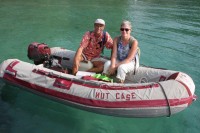
Who: Jim & Katie Coolbaugh
Port: Bethesda, MD USA
Where in the world is Asylum?
Good links
- Vesper Marine Watchmate AIS
- WinchRite Cordless Winch Handle
- Diving at Tubbataha Reef
- Royal Belau Yacht Club, Palau
- ShipTrack: Our route so far
- Passage Weather
- Interview With a Cruiser Project
- Great diving in the Solomons
- Seven Seas Cruising Association
- Divers Alert Network
- Spectra Watermakers
- Rocna Anchors
.jpeg)
